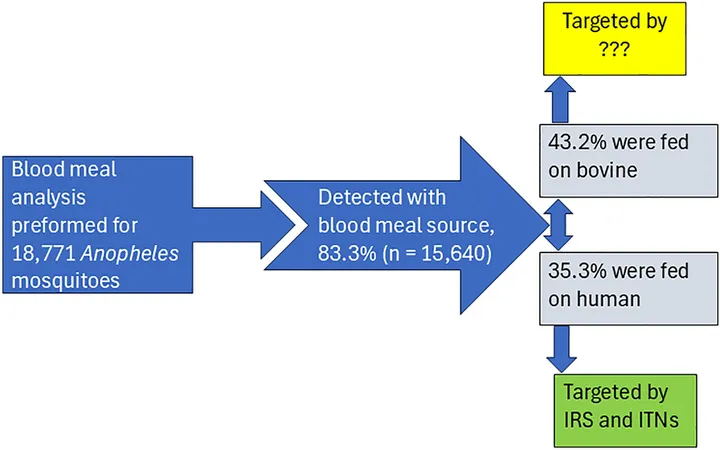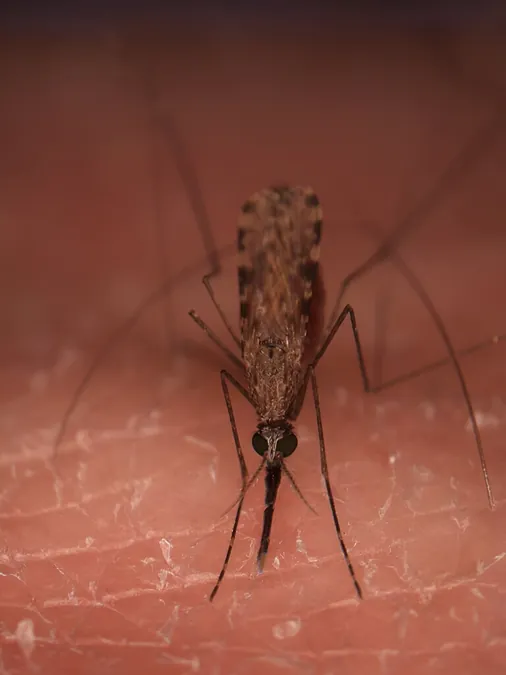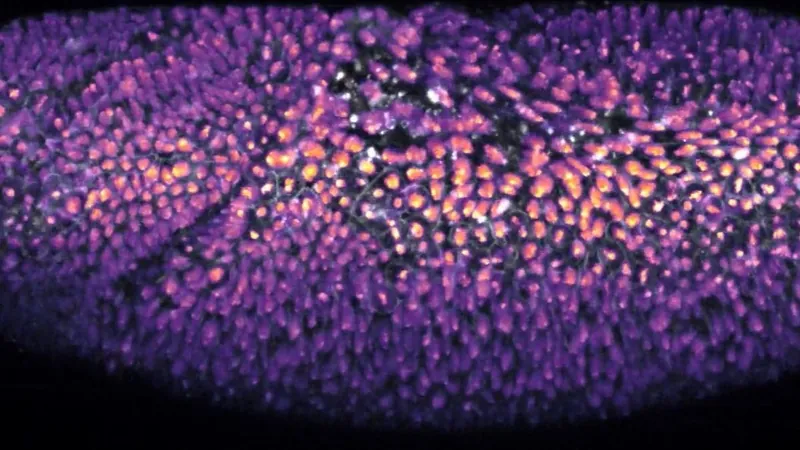
The Surprising Feeding Habits of Anopheles Mosquitoes in Ethiopia: What You Need to Know!
2024-09-28
Introduction
The effectiveness of malaria control strategies is highly reliant on understanding the feeding behaviors of vector species like Anopheles mosquitoes. A systematic review conducted over recent months sheds light on the blood meal sources of these mosquitoes across Ethiopia, revealing some intriguing insights.
Study Overview
Researchers scoured multiple databases and search engines for studies on Anopheles mosquito feeding behavior from March to early April 2024. Out of 2431 studies examined, only 27 met rigorous inclusion criteria, focusing on blood meal sources from 1997 to 2024. This comprehensive review evaluated blood meal sources from a massive collection of 18,771 Anopheles mosquitoes belonging to 23 different species.
Key Findings
The results were striking. The most frequently identified blood meal sources were:
1. **Bovine Blood**: 36.0% of tested Anopheles fed on cattle. 2. **Human Blood**: 29.4% had human hosts.
Anopheles arabiensis emerged as the dominant species, making up 67.9% of all tested specimens. Interestingly, it was found that while the mean proportion of An. arabiensis feeding on domestic animal blood was similar to that of human blood (33.4% vs. 31.8%), certain patterns emerged based on the location of mosquito capture.
*Outdoor-caught An. arabiensis displayed a remarkable preference for bovine blood (47.9%), while indoor captures revealed a different behavior, favoring human blood (more than 32%).*
Contextual Significance
This research highlights not only the critical role of bovine hosts in the ecology of Anopheles mosquitoes but also suggests potential directions for malaria vector control. For instance, targeting domestic animals, especially cows and sheep, with endectocides could enhance current malaria control efforts.
Further Implications
The growth of the invasive urban malaria vector, An. stephensi, which was found to prefer sheep blood, raises alarms about rapidly changing malaria transmission dynamics. This shift emphasizes a need to adapt vector control strategies and invest in innovative solutions to tackle the evolving landscape of malaria transmission.
Furthermore, the review noted that a significant proportion of mosquitoes fed on unidentified blood sources, a matter that requires urgent attention in future research, especially considering the potential of undiscovered animal hosts contributing to the transmission of malaria.
Conclusions
The systematic review reveals pivotal trends in the blood feeding behaviors of Anopheles mosquitoes. As researchers and public health officials grapple with the ongoing threat of malaria in Ethiopia, these insights offer a roadmap for future interventions. Understanding the complex feeding habits of these vectors may unlock new avenues for effectively combatting malaria transmission.
This study underscores the importance of ongoing research and adaptation in public health strategies to keep pace with the shifting patterns of malaria vectors.
Stay tuned as we continue to explore the deep and sometimes baffling world of mosquito behavior—and the implications for global health!




 Brasil (PT)
Brasil (PT)
 Canada (EN)
Canada (EN)
 Chile (ES)
Chile (ES)
 España (ES)
España (ES)
 France (FR)
France (FR)
 Hong Kong (EN)
Hong Kong (EN)
 Italia (IT)
Italia (IT)
 日本 (JA)
日本 (JA)
 Magyarország (HU)
Magyarország (HU)
 Norge (NO)
Norge (NO)
 Polska (PL)
Polska (PL)
 Schweiz (DE)
Schweiz (DE)
 Singapore (EN)
Singapore (EN)
 Sverige (SV)
Sverige (SV)
 Suomi (FI)
Suomi (FI)
 Türkiye (TR)
Türkiye (TR)